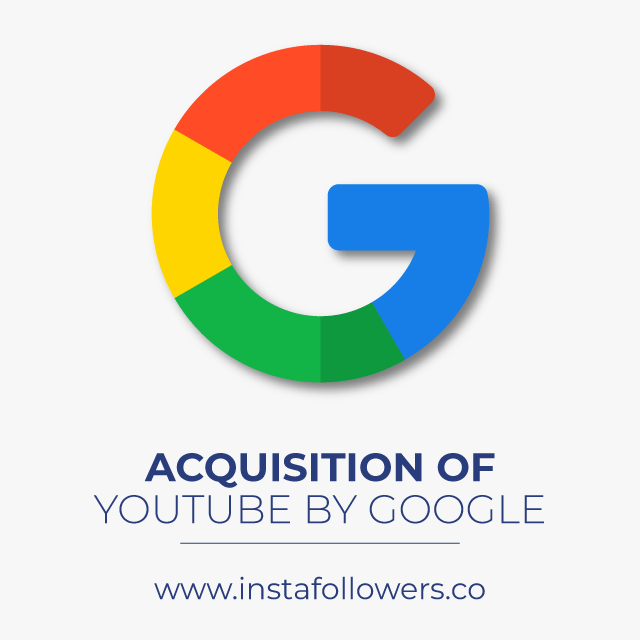In an unprecedented move that would alter the landscape of online multimedia, Google acquired YouTube in 2006, marking a pivotal moment in the history of YouTube. At that time, the platform was not yet profitable, but its capacity to resonate with users was evident, highlighted by a viral video that captured a Google employee’s attention. The acquisition, overseen by YouTube CEO Susan Wojcicki, was fueled by the burgeoning video revolution that YouTube initiated, enabling creators worldwide to share their voices and stories. This monumental investment of $1.65 billion not only underscored the impact of YouTube on the internet but also showcased the potential of user-generated content. As we delve deeper, we will unravel the motivations behind this landmark acquisition and its everlasting influence on digital media.
The purchase of YouTube by Google sent shockwaves through the digital marketing world, influencing how video content is consumed and shared online. This strategic acquisition revealed the growing importance of a platform where anyone could showcase their creativity without the barriers of traditional media. Spearheaded by then Google executive Susan Wojcicki, the deal was a response to the shifting tides of online entertainment, setting the stage for a global video-sharing phenomenon. The implications of this merger were felt throughout the industry, as more brands began to recognize the power of video as an effective communication tool. Exploring this transformative fusion allows us to appreciate the technological advancements that have stemmed from the union of these two giants.
The Historic Acquisition: Google and YouTube
In November 2006, Google made a bold move by acquiring YouTube for a staggering $1.65 billion, a decision that at the time seemed risky given YouTube’s lack of profitability. The acquisition was fueled by a series of strategic insights and the growing importance of video content in an increasingly digital world. By bringing YouTube into its fold, Google recognized the potential to dominate the online video space and capitalize on the emerging opportunities presented by user-generated content.
The deal marked a pivotal moment in the history of YouTube, transforming it from a fledgling platform into a powerhouse of digital entertainment. This acquisition not only gave Google a significant edge over its competitors but also laid the groundwork for the video revolution that would follow. As more users began to upload content, Google positioned itself at the forefront of the internet’s shifting landscape, demonstrating the strong influence that social media and video-sharing sites would have in the years to come.
Frequently Asked Questions
What was the significance of Google’s acquisition of YouTube?
Google’s acquisition of YouTube in 2006 was significant because it marked the beginning of the online video revolution. At that time, YouTube had not yet turned a profit, but Google recognized its potential to transform how content was created and consumed on the internet.
Who was the driving force behind Google acquiring YouTube?
The driving force behind Google acquiring YouTube was Susan Wojcicki. At the time, she served as Google’s Senior Vice President for AdSense and AdWords. Wojcicki was impressed by the viral potential of user-generated content after viewing a lip-sync video, which ultimately led to the acquisition for $1.65 billion.
How has YouTube impacted the internet since its acquisition by Google?
Since its acquisition by Google, YouTube has had a profound impact on the internet by democratizing content creation. It enabled millions to share their videos globally, fostering a new era of online entertainment and influencing various aspects of culture, marketing, and communication.
What role did video content play in Google’s decision to acquire YouTube?
Video content was central to Google’s decision to acquire YouTube. The platform’s vast repository of user-generated videos demonstrated the immense potential for engagement and creativity, driving Google to integrate video into its services to enhance user experience and advertising opportunities.
What was the initial public perception of YouTube before Google’s acquisition?
Before Google acquired YouTube, it was viewed primarily as a budding platform for amateur video sharing. Despite its massive user base, it struggled to monetize its content. Google’s acquisition transformed YouTube into a key player in digital advertising and professional content.
How has YouTube evolved under the leadership of Susan Wojcicki?
Under Susan Wojcicki’s leadership, YouTube has evolved significantly, expanding its content offerings, enhancing monetization strategies for creators, and introducing innovative features such as live streaming and YouTube Premium. Wojcicki has emphasized making YouTube a safe and engaging platform for audiences around the world.
What was the first viral video that influenced Google’s acquisition of YouTube?
The first viral video that influenced Google’s acquisition of YouTube was a lip-sync performance by two Chinese boys to the song ‘As Long As You Love Me’ by the Backstreet Boys. This video showcased the potential for global engagement and user creativity, capturing Susan Wojcicki’s attention.
What was the purchase price for Google’s acquisition of YouTube?
Google acquired YouTube for $1.65 billion in stock in 2006. This investment is often seen as one of the most strategic moves in tech history, allowing Google to dominate the online video landscape.
How did the acquisition change YouTube’s business model?
The acquisition changed YouTube’s business model by introducing advanced advertising methods and partnerships with content creators. Google integrated its ad technology, maximizing YouTube’s revenue potential while enabling creators to monetize their content effectively.
What has been YouTube’s role in shaping digital marketing strategies post-acquisition?
Post-acquisition, YouTube has played a crucial role in shaping digital marketing strategies as brands leverage the platform to reach diverse audiences through video marketing, influencer partnerships, and targeted advertising, making it a vital component of online branding efforts.
| Aspect | Details |
|---|---|
| Acquisition Year | 2006 |
| Acquisition Cost | $1.65 billion |
| Key Figure | Susan Wojcicki |
| Influential Video | Two boys lip-syncing to ‘As Long As You Love Me’ |
| Motivation for Acquisition | Recognition of YouTube’s content creation potential |
Summary
YouTube acquisition marked a turning point in the digital landscape, reshaping how content is created and consumed globally. Google’s strategic move to secure YouTube in 2006 was influenced by the platform’s burgeoning potential and its appeal to diverse audiences, highlighted famously by a viral lip-sync video. This acquisition not only expanded Google’s multimedia portfolio but also laid the groundwork for the rise of user-generated content and the vlogging culture that we see today. Understanding the story behind the YouTube acquisition gives valuable insight into the evolution of digital media.








